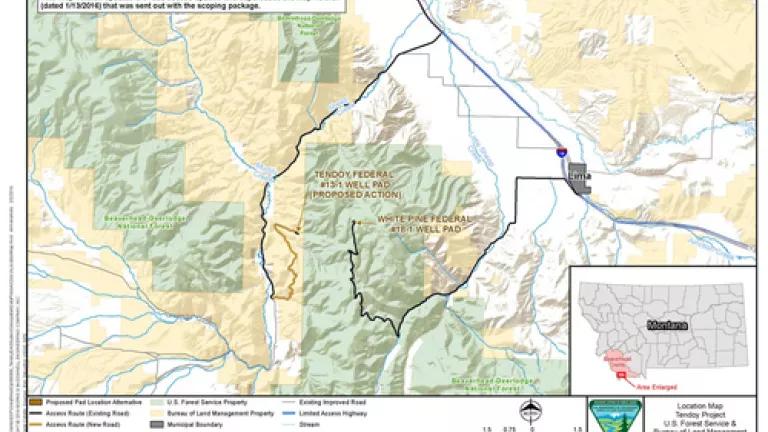
An oil exploration company is proposing to drill a test well in the Tendoy Mountains in southwest Montana on public land west of Lima, Montana. This area in southwest Montana is incredible wildlife habitat with excellent recreation opportunities on public land (e.g., hiking, hunting, fishing, etc.).
The company - Lima Exploration Co., a subsidiary of the Denver-based Great Western Oil and Gas Co. - applied for a drilling permit last summer with hopes of ultimately drilling 10 to 20 wells in the area.
The BLM and Forest Service are in the process of putting together an environmental assessment (EA) to analyze the impacts of the project on the environment. The agencies are currently in the scoping phase, and they are accepting comments from the public regarding what issues and concerns they should address in the forthcoming EA.
Please send a message to tlwallace@blm.gov and ask the BLM and Forest Service to fully analyze in the EA what all of the impacts from the proposed oil development would be to, among other things, wildlife, habitat, water quality, air quality, water quantity, public health, and recreation.

(Photo Credit: walkaboutwest - Ellis Peak - Tendoy Mountains, Montana)
They are accepting public comments through March 25. Here are a few things to consider:
The initial construction phase of the project will include a 150 foot-tall drilling rig, a 5 acre well pad, and 24 hour a day operations for more than a month. Potential longer-term impacts would include the further destruction of wildlife habitat to make room for more wells and road construction to accommodate heavy truck traffic. There are also potential water quantity and quality issues as well as impacts to the public use and enjoyment of this area as a recreational destination for hiking, camping, fishing, and hunting.
This project could mean big trouble for area wildlife, which includes some of the West's most iconic species. A joint report from NRDC and the National Wildlife Federation released last November explains how devastating dirty energy development can be on wildlife. Vegetation and soils are often removed. Water sources can be altered or depleted. Transmission lines and roads can fragment habitat, displace wildlife, and increase predation and accidental wildlife deaths. Additionally, the infrastructure (e.g., roads, pipelines, etc.) and increased human presence on the landscape can also have harmful effects on wildlife in the area.
The Tendoy Mountains and Lima Peaks are known for a diverse and abundant array of wildlife, including elk, mule deer, wolves, mountain lions, upland birds, westslope cutthroat trout, and all sorts of other wildlife, birds, and fish. Montana Fish, Wildlife & Parks is currently involved in a wild bighorn sheep project in this area. The larger area is also home to core sage grouse habitat, land deemed crucial for rehabilitating the iconic bird that was almost listed under the Endangered Species Act last year.
To the extent that dirty energy development continues to destroy wildlife habitat, all species will be forced to exist on less and lower quality land, leading to declines in population and overall health. This doesn't just mean trouble for wildlife. Bountiful wildlife populations are a major part of Montana's culture and economy. Deteriorations in habitat quality associated with oil and gas development can negatively affect wildlife populations and, in turn, impact hunters, wildlife watchers, and the tourism industry as a whole, which brings millions of people and billions of dollars to our state each year.
Please speak up today and contact the BLM and Forest service to make sure they take these factors into account in their EA for the proposed Tendoy Project.
